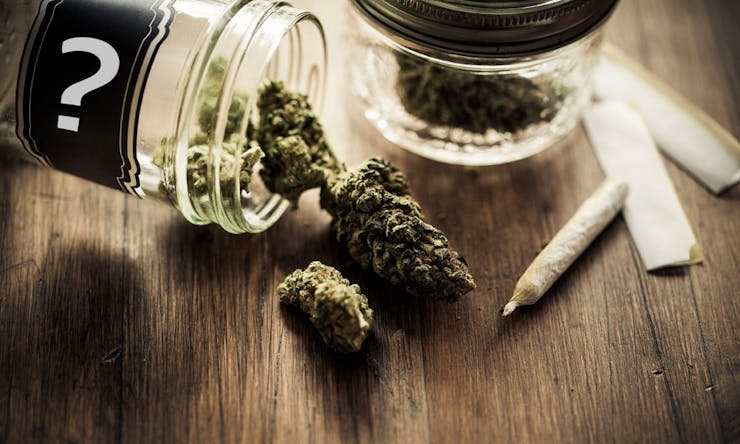For those of you who thought a magical strain identification scanner was possible and tried to use Leafly’s Marijuana Analysis Recognition Interpreter (or MARI), we’re sorry we fooled you but we couldn’t resist. Over the last few years, we’ve received a comically large volume of emails asking us to identify strains based on bud photos, so we were compelled to finally (a) prank y’all, and (b) explain why this would next to impossible without a really specific and random superpower.
First off, there are tons of strains out there. The Leafly Explorer documents over a thousand varieties, but new hybrids are born all the time. No matter how crisp and clear your photo is, that strain is going to look like many, many others.
Second, even strains with the same genetic background express variable characteristics. Think of wine: can you look at a glass of red and determine whether it’s a Merlot, a Cabernet Sauvignon, a Malbec, a Syrah, a Pinot Noir, a Zinfandel, a Sangiovese, or a Barbera based on sight alone? A Cabernet Sauvignon made in Bordeaux is going to taste different than a Cab Sauv from Napa Valley, which will differ from a Cab Sauv from Canada’s Okanagan Valley, which will be distinct from one crafted in Australia.
Even if each bottle is comprised from the same percentage of Merlot, Cab Franc, and Cabernet Sauvignon grapes, a variety of factors such as temperature, soil, water, and other growing, cultivation, and processing techniques means that the taste and look of the same type of wine will differ depending on the region (or even different batches from the same region).
These factors affect cannabis as well. Your Blue Dream may not look like your friend’s Blue Dream because strains can exhibit different outward appearances in response to environmental factors – we call these variations within a given strain phenotypes. Here, look:


Two Blue Dreams, two different looks entirely. Like little fraternal nug twins.
If you have a mystery bud, you can use Leafly’s effect and flavor filters to help you narrow it down, but of course, this won’t give you a definitive answer. We’re sorry technology has let you down, but the minute humans figure out how to interpret DNA visually, we’ll be sure to let you know.





